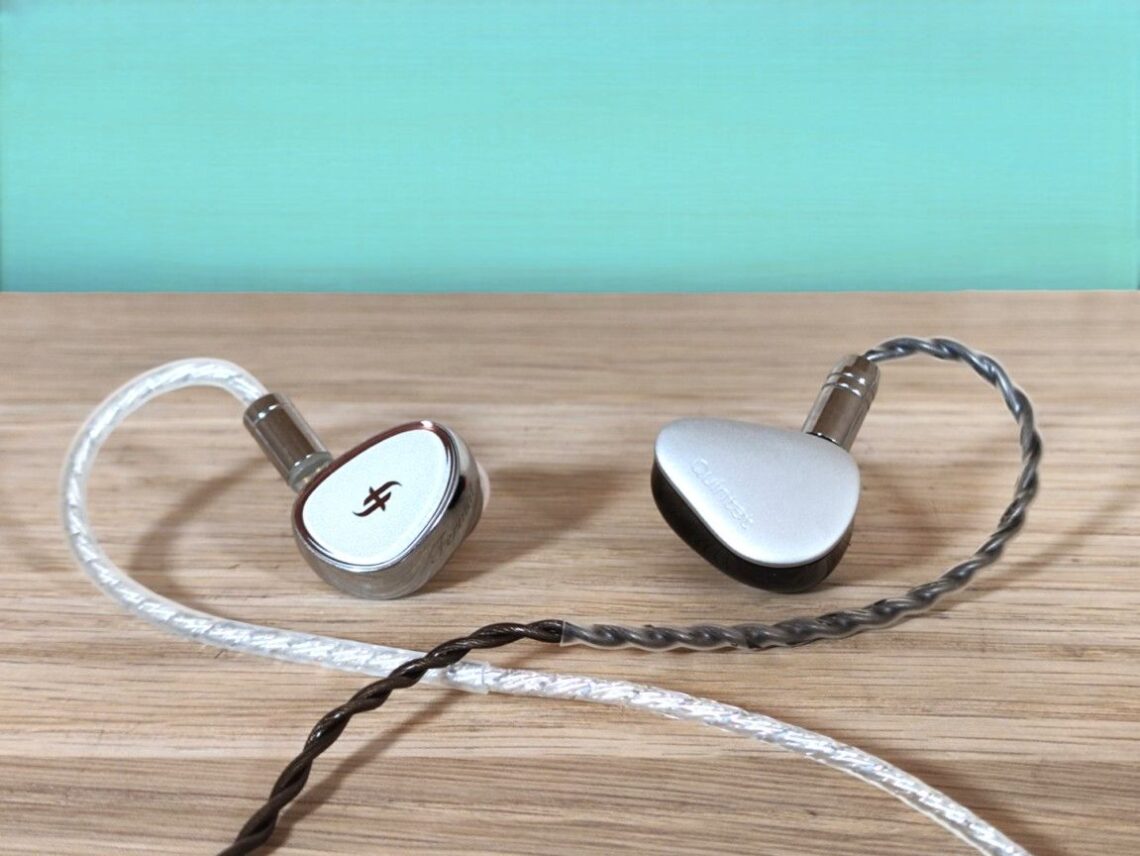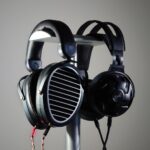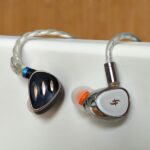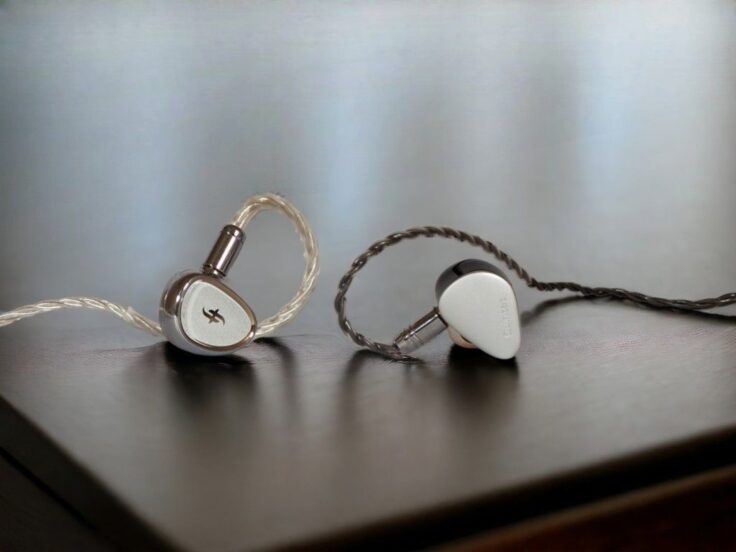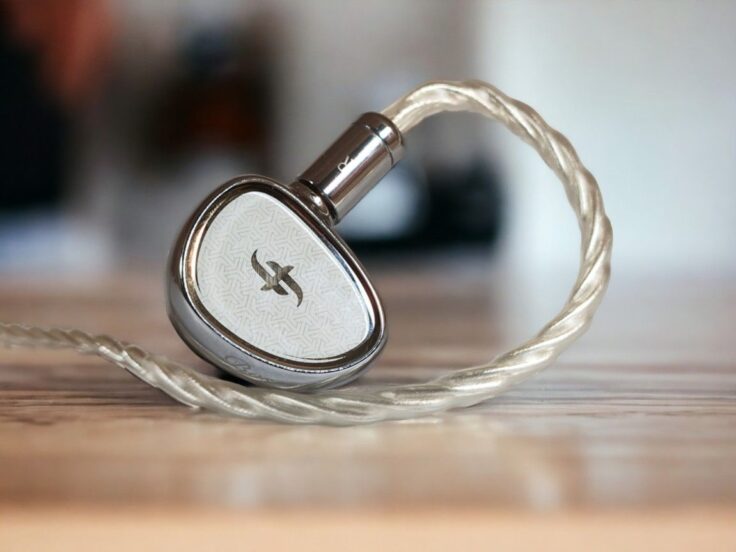This is a comparison between two of my favorite IEMs. They are very differently constructed and use a very different driver set up.
The Quintet has 5 drivers per side – and 4 different types of drivers: 1 Diamond-Like Carbon (DLC) Dynamic Driver (DD), 2 balanced armature (BA) drivers, 1 planar magnetic driver, and 1 piezoelectric (PZT) bone conductor. All this is fitted into a surprisingly small housing made of a polymer material with a metal faceplate. It is very light and fits very well in the ear.
The EA1000 features a single 10mm Dynamic Driver (DD) that takes care of the whole frequency spectrum. It’s set up to work with the help of a 6mm Passive Radiator PR, a passive diaphragm that regulates the air volume inside the housing. The EA1000 comes with 3 different types of detachable nozzles that are very effective and give 3 well implemented tuning possibilities. The EA1000 has a metal housing and is significantly heavier than the Quintet, but still sits nicely and comfortably in the ear.
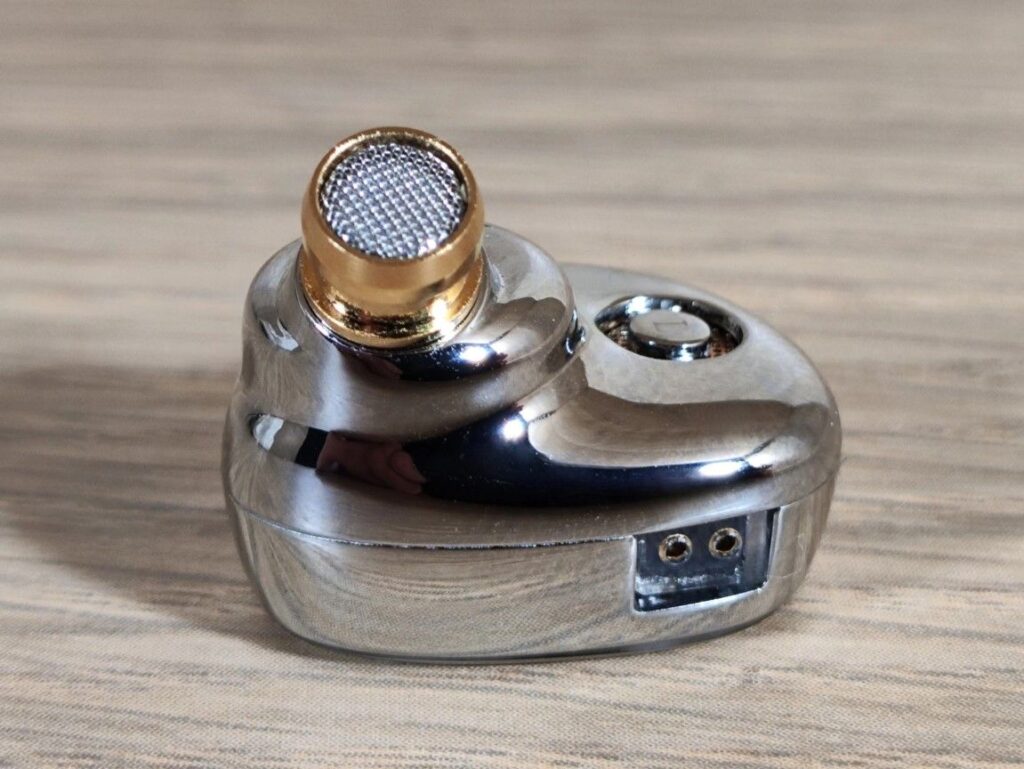
I find it important to comment on the three nozzles that come with the EA1000. I will elaborate at the end of the article as well. However, here is an introduction:
Nozzle 1 (Steel with Red Ring) is the one mounted on the EA1000 when you get it, and often the one used in reviews. It’s relatively bass-heavy with mellow highs and mids. Nozzle 2 (Golden Brass with Clear Ring) has less bass and brighter treble with more midrange presence. Nozzle 3 (Steel with Black Ring) has a very neutral bass, crisper treble – along with an upfront midrange.
I have used Nozzle 2 (Golden Brass with Clear Ring) in my comparison between the EA1000 and the Quintet. It is to me the best all-round option, and it sits in the middle of the other two nozzles with regards to tuning. It’s also the nozzle that makes the EA1000 sound the closest to the Quintet.
Both the Quintet and the EA2000 use the standard 0.78 mm 2-pin connectors on the IEMs. The supplied cables are 3.5 mm terminated on both.
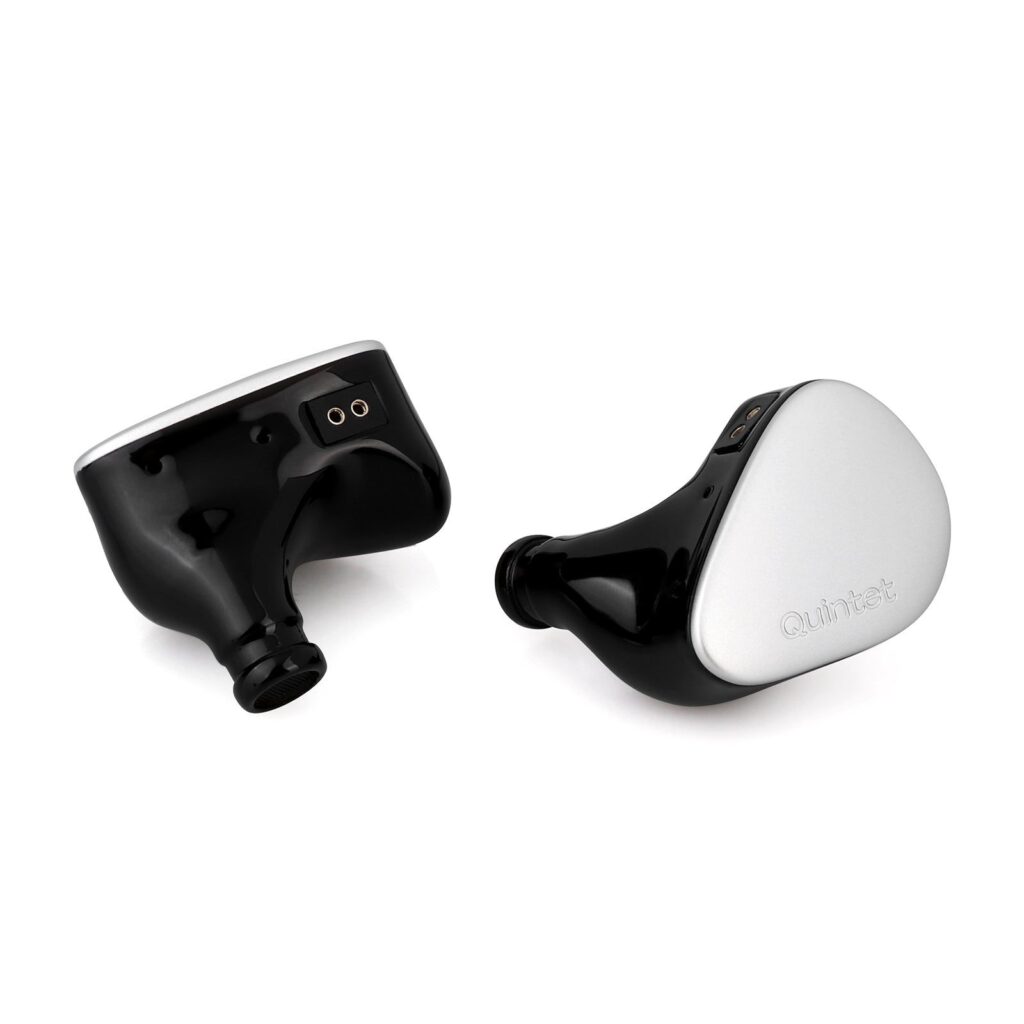
KIWI EARS QUINTET SPECIFICATIONS
- Drivers: 1 Diamond-Like Carbon (DLC) dynamic driver, 2 balanced armature (BA) drivers, 1 planar magnetic driver, and 1 piezoelectric (PZT) bone conductor
- Impedance 32 Ohms
- Sensitivity: 106 dB
- Included cable: 1.2 m Detachable Silver-Plated OFC Cable
- Cable plug type amp: 3.5mm
- Cable plug IEM: Detachable 0.78mm 2 Pin
Check price on Linsoul: Kiwi Quintet
Check price on Amazon: Kiwi Quintet
SIMGOT EA1000 SPECIFICATIONS
- Driver: 10mm Dual-Magnetic & Dual-Cavity Dynamic Driver, 1 Passive Radiator
- Diaphragm: Multi-Layer Sputter Deposition Purple-Gold Diaphragm
- Impedance: 16 Ohms ±15% (@1kHz)
- Sensitivity: 127 dB/Vrms (@1kHz)
- Frequency Response: 10Hz-50kHz
- Effective Frequency Response: 20Hz-20kHz
- Included Detachable Cable: Silver-Plated OFC Litz Cable
- Cable plug: 3.5mm
- Attachment plugs IEM: 0.78mm 2 pin
Check price on Linsoul: Simgot EA1000
Check price on Amazon Simgot EA1000
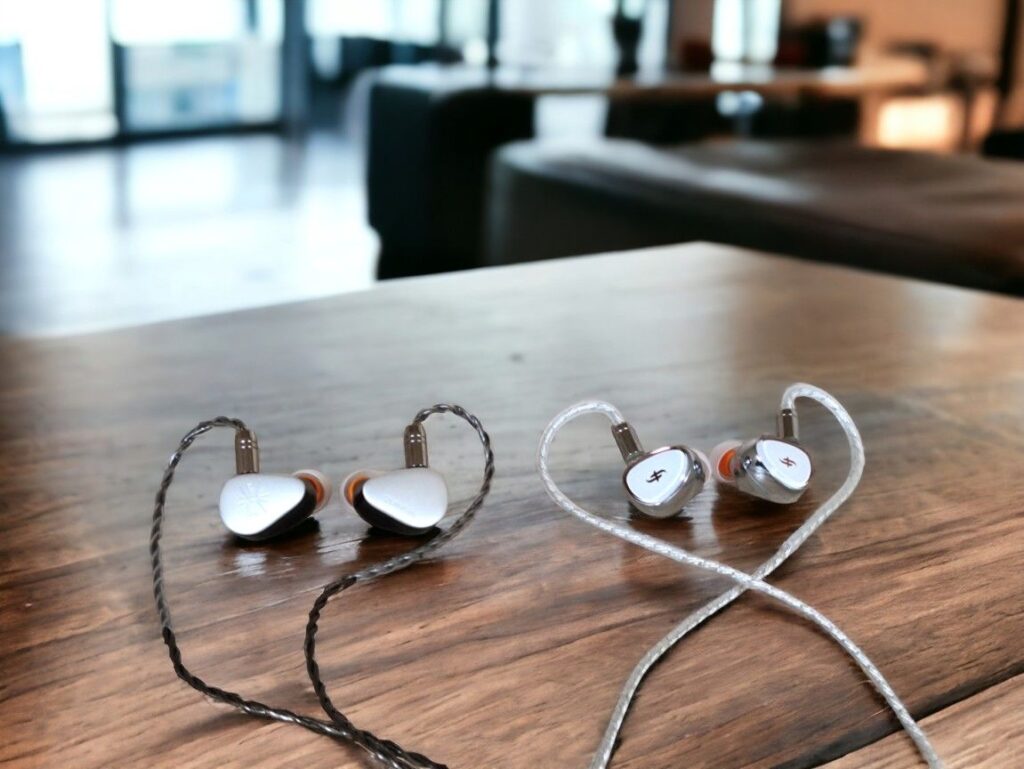
COMPARISONS
I used the Topping A90 amp and the RME ADI-2 DAC FS as a source for this comparison.
TRACK BY TRACK COMPARISON
Jambi by Tool
Starting out with some metal, they are quite close sounding. The sound stage is equally wide and deep on both, dynamics and detail levels are great. The Quintet is a tad crisper and sharper cut, the EA1000 slightly fuller sounding. I find that Quintet sounds a bit more textured and defined across the frequency spectrum, the EA1000 sounds a bit more organic, the edges are a bit rounder. It’s liquid detail vs texture, to put it that way.
Black Crow by Cassandra Wilson
Again they are quite similar in almost every regard. They both sound terrific. The bass is well balanced and not too strong, the vocals are nicely present.
The Quintet has a little bit more space between instruments and more texture and a little bit sharper details. The EA1000 feels a bit less edgy and has a very natural sounding timbre. Not that the Quintet doesn’t sound natural, but in direct comparison to the EA1000, it comes off as a bit less organic.
Mahler’s Symphony no 2 Part III by Paavo Järvi
Both have similarly powerful sounding kettle drums. The EA1000 is slightly fuller sounding. The strings are beautifully rendered with great detail, separation and texture with both. The EA1000 offers a little more warmth and organic timbre, the Quintet is slightly sharper, slightly drier, with a little bit more texture. It is not a big difference but it sounds a bit more technical, the EA1000 sounds slightly more organic. They are very close in all aspects but I do find that the Quintet has the edge on technicalities like sharp cut detail, while the EA1000 has slightly better timbre.
Smile by Pearl Jam
Again they are very similar. The vocals are a bit warmer sounding with the EA1000. The bass is a bit more rounded. The Quintet is a tad sharper with slightly more space between instruments. Neither are especially bright sounding and importantly they’re not sibilant when Eddie Vedder sings the S in “Smile”, a sound that can be problematically sibilant with certain headphones.
Almost Like the Blues by Leonard Cohen
The bass is a little bit tighter with the Quintet, the EA1000 again a bit more rounded. The rattle has more texture with the Quintet. The vocals are a bit more rounded and organic sounding with the EA1000, the Quintet has a more textured and sharper rendering.
Bubbles by Yosi Horikawa
The Quintet has a bit more detail and texture. It sounds a bit brighter with a little more fine detail. However, it also sounds a bit drier.
Spontanius Compositorius by Thomas Agergaard
The saxophone has a bit more warmth with the EA1000, it is a bit drier sounding with the Quintet. The treble-intensive improvisational percussion sounds more brittle with the Quintet and has a slightly more rounded timbre with the EA1000. The standing bass is a slightly fuller and organic sounding with the EA1000, while it has more texture with the Quintet.
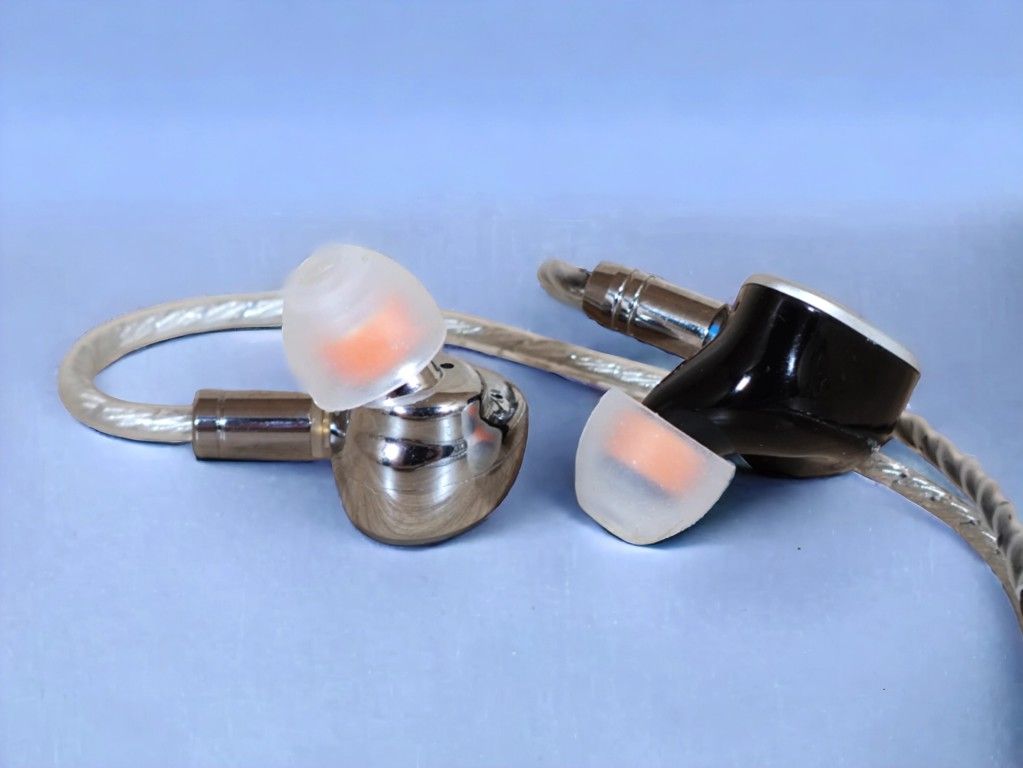
WRAPPING IT UP
After listening through my playlist I can conclude that the differences between these IEMs are relatively small but consistent. Keep in mind that I use the EA1000 with the brass nozzles installed.
Sounds Signature
These IEMs have a similar sound signature. No headphone or IEM measures or sounds exactly the same but in the big picture, these are really close. There is some variation in how I perceive the differences between them from track to track. Both have a good amount of bass but neither reaches bass-head levels. The midrange is nicely present and the treble has a good amount of weight and articulation.
Soundstage and Imaging
Here I find that they are very equal. The sound stage is quite wide, tall and deep with both. When it comes to imaging, the Quintet has slightly better instrument separation. Both are good at positioning instruments in space, creating a good holographic soundscape.
Dynamics and Detail
These are both very dynamic sounding IEMs. Punchy bass, a lively and articulate treble. In other words; they are good at macrodynamics. Both also do well with microdynamics, which is the articulation of detail.
When it comes to raw detail retrieval, the Quintet has the upper hand. Textures are more apparent, details have more obvious and sharper definition. However, the EA1000 sounds more liquid and presents detail in a smoother manner in all parts of the frequency spectrum.
Treble
They have a relatively equal amount of treble energy and are pretty close in terms of frequency response too, as far as I can tell. The treble of the Quintet sounds slightly more brittle, a bit drier and more clinical. Details are easier to identify. The EA1000 is smoother and more liquid, yet still retaining a high amount of low level information and fine nuances.
Midrange
They are similarly tuned, but also here the Quintet sounds rawer with more prevalent texture. The EA1000 sounds more organic and smooth. It delivers more warmth and a slightly fuller sound.
Bass
I find both to have a very dynamic sounding bass. It is punchy and solid. Both present a good amount of detail. The Quintet offers a bit more texture and definition, but also sounds slightly drier. The bass is a bit more meaty with the EA1000.
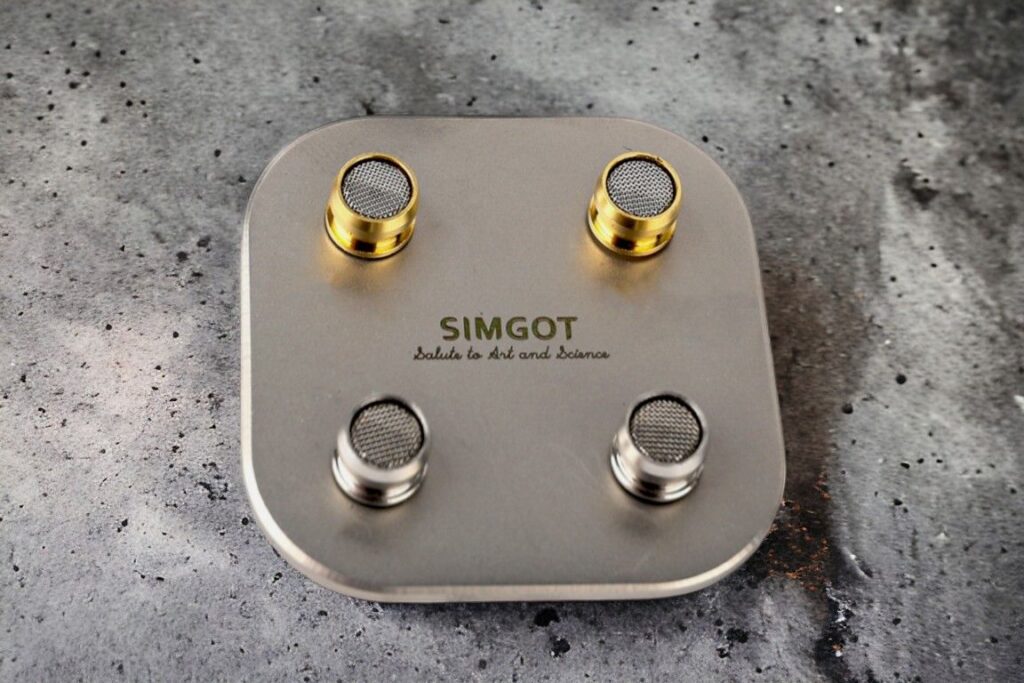
EA1000 Nozzles
I mentioned the nozzle alternatives in the intro, but want to elaborate a bit since they have such an impact on the way the EA1000 sounds. It performs impressively well with all its nozzles, offering distinct sound signatures. I will cover this in detail in my separate review of the EA1000. Here’s a short description of the three nozzles:
Nozzle 1 (Steel with Red Ring) provides a bass-heavy, powerful sound with mellow highs and mids. This tuning makes it less similar to the Quintet. It sounds good, but it’s my least preferred option. However, this is the “standard” nozzle that most other reviews seem to focus on.
Nozzle 2 (Brass with Clear Ring) takes the bass down a bit and increases the midrange and treble presence. This is the nozzle used here in my comparison with the Quintet. This is my favourite tuning.
Nozzle 3 (Steel with Black Ring) offers an even less prominent and quite neutral bass, crisp treble, and an upfront midrange. I like this a lot too.
Despite the differences in tuning, the EA1000’s technical performance remains consistent across nozzles. It is a very nice feature, and makes the EA1000 more flexible than the Quintet.
COMPARED TO THE QUINTET
Nozzle 1 will make the EA1000 sound darker and more bassy than the Quintet.
Nozzle 2 (brass) is the one I have used here and makes the EA1000 sound the most similar to the Quintet.
Nozzle 3 will generally make the EA1000 sound slightly brighter and crisper than the Quintet, however they will often still sound quite similar, depending on the track.
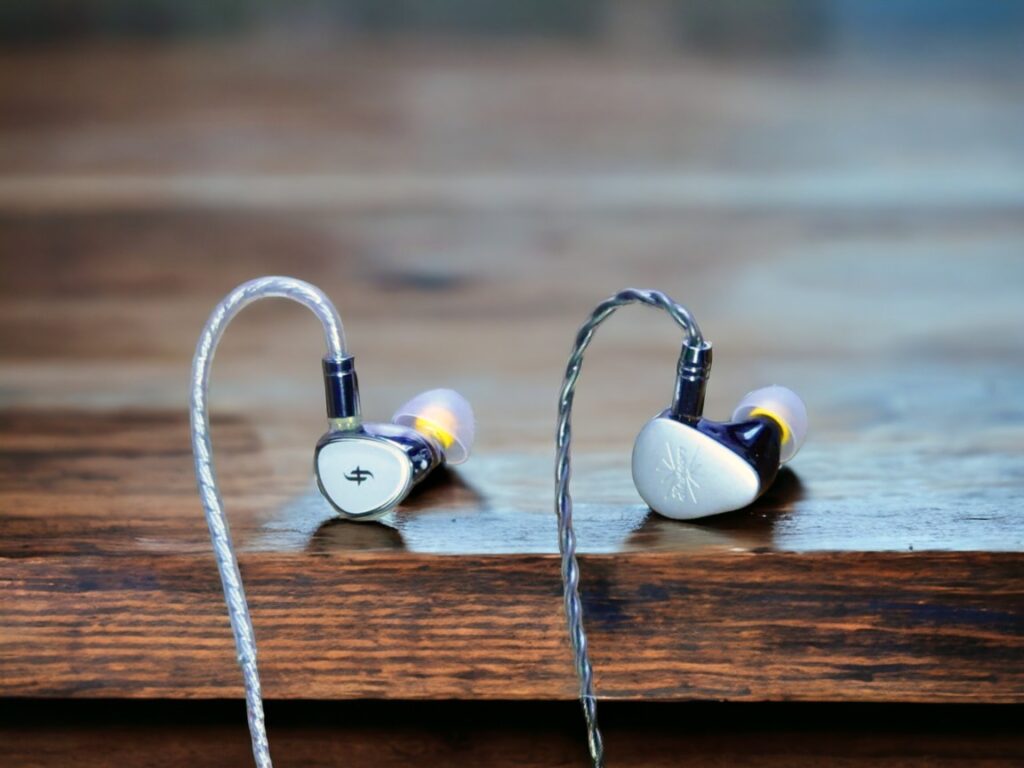
CONCLUSION
The Kiwi Ears Quintet and the Simgot EA1000 are two fantastic IEMs. With the brass nozzles installed on the EA1000, they are quite similarly tuned. They have a solid bass, a present mid-range and a well articulated treble.
The way they differ is primarily in how they render the music and present fine detail. The Quintet has a more prominent sense of texture and sharper cut detail, but in direct comparison to the EA1000 it can sound a bit dry. The EA1000 is slightly less hyper-detailed but sounds more organic and liquid.
In the big picture, however, these are fabolous sounding devices and easily among the best in class.
Product links:
Buy on Linsoul: Kiwi Quintet
Buy on Amazon: Kiwi Quintet
Buy on Linsoul: Simgot EA1000
Buy on Amazon Simgot EA1000
We make earnings through affiliate links and any purchase you make on Amazon or Linsoul clicking one of our links will give us a small provision at no cost to you.
We only get a provision for items that are not returned, so there’s no incentive for us to recommend something that’s not good.
Linsoul : Headphones, Earbuds, Wireless Earbuds, Desktop DAC/AMP, Portable DAC/AMP, Digital Audio Players,
Amazon: Headphones, IEMs, Headphone Amplifiers, Home Audio or Anything else.
.
If you enjoyed this article or other content on The Headphoneer, you might consider leaving a small donation to keep this website up and running. No donation is too small. Thanks for supporting us!
If you like our work please follow us on Instagram, Facebook and Twitter , it will help us grow. Sharing is caring 🙂


